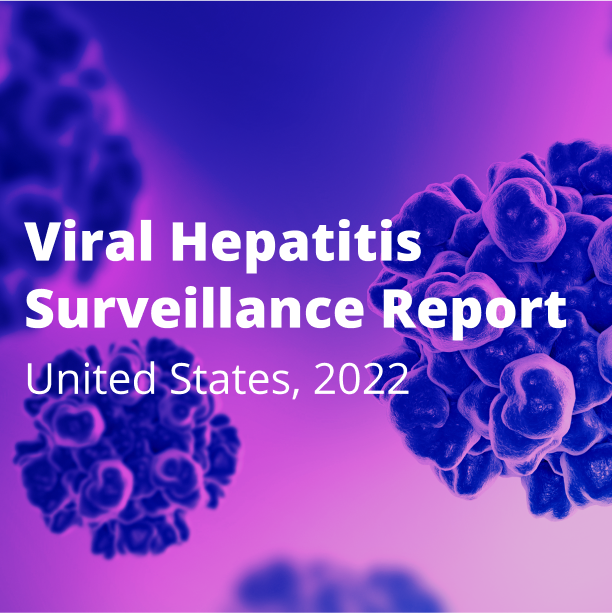
2024 Viral Hepatitis National Progress Report Overview
The Centers for Disease Control and Prevention (CDC) strives to prevent viral hepatitis and eliminate disease and death caused by viral hepatitis. The 2024 Viral Hepatitis National Progress Report provides information on progress toward 2025 goals for new viral hepatitis infections and viral hepatitis–related deaths, overall and for key populations. In 2020, CDC modified the goals and associated targets from previous reports to align them with CDC’s Division of Viral Hepatitis 2025 Strategic Plan and the US Department of Health and Human Services’ Viral Hepatitis National Strategic Plan for 2021–2025.
The global COVID-19 pandemic began in March 2020 and continued to cause disruptions in access to medical care and routine public health activities during 2021 and 2022. Pandemic-related stay-at-home orders suspended or delayed many routine health care visits and patients avoided seeking medical and preventative services, and a decline in testing for hepatitis C was identified. Furthermore, many health department staff routinely assigned to viral hepatitis case investigation and surveillance activities were reassigned to respond to the COVID-19 pandemic during 2020–2022, which might have affected a health department’s capacity to detect, investigate, and report all hepatitis cases in their jurisdiction. The COVID-19 pandemic also had a profound impact on death with the overall age-adjusted death rates increasing during 2020 and 2021 compared to 2019. Provisional mortality data in 2022 suggests that while the impact of COVID-19 on overall mortality decreased, COVID-19 remained a leading cause of death. For these reasons, the numbers and rates of viral hepatitis cases and viral hepatitis-related deaths for 2020–2022 presented in this report should be interpreted with caution.1
Key findings
Following several years of increasing hepatitis A virus (HAV) infections during widespread outbreaks, the number of estimated HAV infections declined for the third consecutive year in 2022, though the annual target was not met. By the end of 2022, 28 of 37 states had declared an end to hepatitis A outbreaks, which had occurred primarily among persons who use drugs and those experiencing homelessness.2 These outbreaks demonstrate the importance of surveillance to identify cases and vaccination to prevent and respond to hepatitis A. Continued efforts to vaccinate persons at increased risk for hepatitis A, including people who use drugs and people experiencing homelessness, will be crucial to prevent future outbreaks and meet national elimination goals.
The number of estimated new hepatitis B virus (HBV) infections was relatively stable at around 20,000 infections annually during 2015–2019 but decreased substantially in 2020 and remained relatively stable in 2021 and 2022. Changes in health care-seeking behavior and testing during the COVID-19 pandemic could potentially explain these observed declines; however, when compared to 2015–2019, the persistence of these lower numbers throughout 2020–2022 suggests some reduction in HBV transmission that might be unrelated to the COVID-19 pandemic. The annual targets for reducing hepatitis B-related deaths overall and among non-Hispanic Asian/Pacific Islander persons were not met in 2022. Continued efforts are needed to implement CDC’s expanded hepatitis B vaccination recommendations and hepatitis B screening and testing recommendations among adults, improve appropriate testing and linkage to care, and reduce hepatitis B-related health disparities.
The number of estimated new hepatitis C virus (HCV) infections declined for the first time in 2022 after over a decade of consecutive annual increases. However, the number of estimated new HCV infections remained relatively high at 67,400 and did not meet the 2022 target. The rate of new cases among persons aged 18–40 years, a proxy for persons who inject drugs, declined for the second year in a row but remained well above the annual target. Death rates among non-Hispanic Black persons remain higher than the national rate, though the 2022 target was met. Death rates among non-Hispanic American Indian/Alaska Native persons also remained higher than the overall national rate, with little progress toward the 2025 target. Efforts to connect people who inject drugs to harm reduction services, including syringe services programs and substance use disorder treatment, are crucial to prevent ongoing transmission. In addition, continued efforts are needed to improve testing and ensure equitable treatment for all people with hepatitis C.
References
- Centers for Disease Control and Prevention. Viral Hepatitis Surveillance—United States, Viral Hepatitis Surveillance – United States, 2022. Published March 2024. Accessed [date].
- Centers for Disease Control and Prevention. Widespread person-to-person outbreaks of hepatitis A across the United States. Atlanta, GA: US Department of Health and Human Services, CDC 2022.
